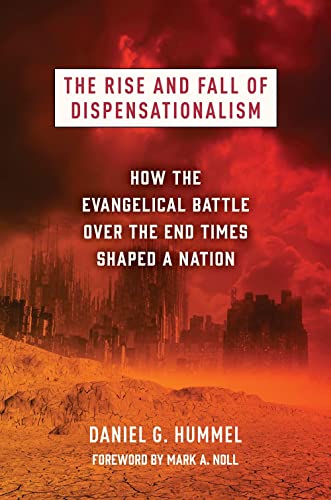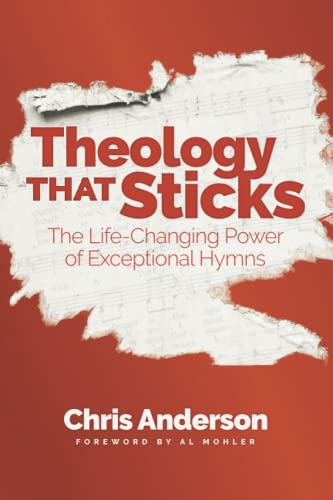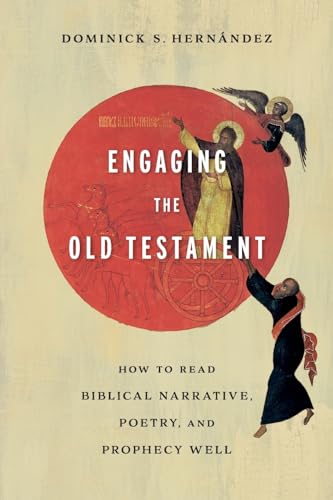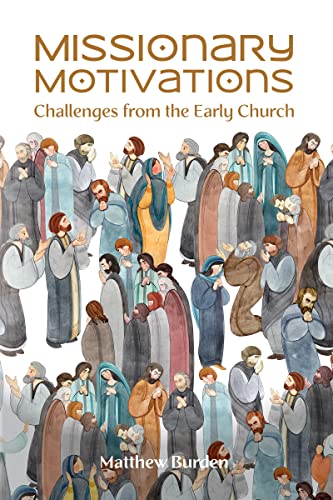The Rise and Fall of Dispensationalism: How the Evangelical Battle over the End Times Shaped a Nation
Written by Daniel G. Hummel Reviewed By Kenneth J. StewartIt is gratifying for a reviewer to find that the volume in hand sheds light on his/her lived experience. The evangelical setting in which the reviewer was reared embodied a “soft,” rather undogmatic expression of dispensationalism, the incessant themes of which were the any-moment return of Christ, the priority of foreign missions, and the futility of efforts to improve global affairs. Why look to the United Nations to achieve what only Christ’s return could accomplish? Yet the term, “dispensationalism,” was almost never uttered, and Scofield Bibles were rarely seen.
In the impressive landscape sketched by Daniel Hummel, certain things from a century ago become much clearer. Nineteenth-century evangelicals held no unified understanding of the Christian “last things” beyond an expectation of Christ’s personal return to raise the dead and judge the world. But in post-Civil War America, one of the existing opinions (the historical premillennial view, which understood the book of Revelation to describe events occurring throughout church history preliminary to the second advent) was challenged by the importation of a variant premillennialism associated with the Irish clergyman, J. N. Darby, and the Exclusive Brethren. This variant, a “futurist” premillennialism, saw the book of Revelation as describing still-future events. It made a clear distinction between the kingdom of God (which remains still future on account of the Jewish rejection of Jesus as Messiah) and the kingdom of Heaven, which opens its gates in the here and now to all who believe. It maintained belief in a secret return of Christ from heaven to remove believers from this world prior to the troubles of a coming tribulation period.
This second view gradually won over a large proportion of those who held the older view, but not without a fight that divided fundamentalist ranks by the 1920s. Originally diffused from the American Upper Midwest, it came to be associated with Christian leaders in St. Louis, Chicago, and Minneapolis. In a popularized form, it was endorsed by figures such as D. L. Moody, who taught its main features as he sought to unite post-Civil War evangelicals for the cause of evangelism and missions. But a more intricate and systematic form of this new premillennialism was codified and circulated through the publication of the Scofield Bible of 1909; in time, it came to be most closely associated with new seminaries set up in Dallas, Winona Lake, and Los Angeles. All the while, the less-doctrinaire version of this “futurism” was permeating a wide expanse of North American evangelicalism; it also permeated Pentecostalism. Social progress was an illusion; evangelism and foreign missions were said to be the raison d’être of the church, higher education became suspect, and bible schools/institutes were declared more trustworthy. The early Billy Graham exhibited all these traits.
But it was inevitable that pushback would come. Futuristic premillennialism had open opponents since before 1900. Those named by Hummel as “nationalist fundamentalists” fought back in the 1920s not because they were necessarily averse to premillennialism itself but because they rejected the social pessimism that had no appetite for opposing social evils and resisting error in the churches (leaving all remedies to the second advent). Christians in the Reformed and Lutheran traditions also generally opposed the new premillennialism because of its dogged insistence on a wooden literal interpretation (even when this was unhelpful) and because it undermined confidence in a continuous divine plan of salvation across both Testaments. Notably, J. Gresham Machen had identified these dangers in his Christianity and Liberalism (1923).
Futurist premillennialists who tried to straddle this divide generally paid dearly. While the “covenantal” pushback from the 1930s onward continued, the forces of those opposing futurist premillennialism expanded when George Eldon Ladd of the young Fuller Theological Seminary published Crucial Questions About the Kingdom of God (Grand Rapids: Eerdmans, 1952). Already determining to steer clear of their “covenantalist” critics, the learned advocates of futurist premillennialism (Hummel continually refers to them as “scholastics”) now also had to cope with critics, like Ladd, who eventually abandoned their earlier, mediating position as unsustainable and biblically irresponsible. The quiescence of dispensationalism in the face of societal inequity and institutionalized wrong was telling against it, just as were the arguments based on principles of biblical interpretation. The 1950s and 60s were, therefore, a period in which the futuristic premillennialism associated with Dallas, Winona Lake, and Los Angeles was put on the defensive. The loss of dominance was on clear display at the 1971 Jerusalem Conference on Prophecy. Scholarly insiders in the movement were soon advocating a revisionist “progressive dispensationalism,” which gave ground to longstanding criticisms.
But that same Cold War era simultaneously generated a fresh challenge to the dispensationalist system from the grassroots. Authors schooled in classic dispensationalism (Hal Lindsay, Tim LaHaye) could not resist the urge to preach and write in the virtual certainty that the threats of nuclear war, the events of the six-day Arab-Israeli conflict, and the growing threat posed by secular humanism were of prophetic significance. Christian pop music took up the themes of the rapture and nuclear destruction. And the drum-beating about secular humanism, in particular, moved the needle (so to speak) in urging dispensationalists who earlier had been socially quiescent (pinning all hopes for society on the Lord’s return) to become socially and politically active so as to stop the drift. At this point, the stage was dominated by a “pop dispensationalism,” untethered from whatever restraints existed in the movement’s flagship seminaries. This “pop dispensationalism”—now taking secularized form—was embraced by the Christian nationalist political movements that aimed to “take back America.” In sum, Hummell has described a movement which, while in the steady process of disintegration (considered theologically), was steadily expanding as a now-secularized ideology that has embraced domestic conflict, political confrontation, and Armageddon language in defense of a “Christian America.” The flag carriers of this secularized dispensationalism may or may not be Christian believers, but thanks to pop dispensationalism, they have come to conceive of contemporary America in apocalyptic terms.
Hummel’s book is breathtaking in its scope, written as much as a history of American culture as a work of historical theology. It is based on very wide reading, and it is clear that he has had access to libraries and archives of a number of the major institutions that he holds most responsible for unleashing this ideology upon the evangelical world. While acknowledging (in the Epilogue) that this movement forms the backdrop to his own Christian upbringing, the reader can at the same time observe something akin to the author’s raised eyebrows as the narrative captures statements and details that border on the bizarre.
Three main weaknesses can be acknowledged. The first is that though the volume provides a most valuable extended Bibliographic Essay at its close (pp. 349–67), summarizing the wide reading behind each chapter, the book itself suffers from significant under-documentation. There will be numerous other writers in this field who, on reading Hummel’s account, will find their research echoed in his pages but never directly acknowledged in his footnotes. The Bibliographic Essay may be an honest recollection, but more of these literary debts ought to have found their way into reference notes.
The second is that this is an overwhelmingly American book for American readers. Who can fault that? The reviewer raises the issue primarily because the nineteenth-century British origins of futuristic premillennialism go seriously under-reported in this volume. The social pessimism that Hummel associates with post-Civil War America was alive and well in late Georgian England. That earlier social pessimism was stoked by seemingly limitless immigration (from Catholic Ireland), by the unwelcome aspirations after popular democracy unleashed by the Napoleonic Era, and by the ending of religious “tests” for those seeking university admission or elected office.
The third is that this volume includes far too many minor historical errors of fact. Donald Grey Barnhouse attended but did not graduate from Princeton Seminary (p. 165). Westminster Theological Seminary was not, at first, situated in Glenside, Pennsylvania (p. 192). Amsterdam’s Free University did not offer a PhD in theology in 1931 (p. 193). William Hendriksen was not yet on the faculty of Calvin Seminary when he released his More Than Conquerors in 1939 (p. 197). Chuck Swindoll was at first president and only subsequently chancellor of Dallas Seminary (p. 293). Bruce Waltke departed Dallas Seminary initially for Regent College, Vancouver, rather than Westminster Seminary (p. 307). Biographical dictionaries are available, which could have caught these flaws.
The Rise and Fall of Dispensationalism is a monument to Hummel’s industry, spread across years and miles travelled. In light of it, the reviewer can make much better sense of the influences that shaped, first, his parents’ generation and then his own.
Kenneth J. Stewart
Ken Stewart is emeritus professor of theological studies at Covenant College in Lookout Mountain, Georgia.
Other Articles in this Issue
Menzies responds to Tupamahu’s post-colonial critique of the Pentecostal reading of Acts and the missionary enterprise...
The Lamblike Servant: The Function of John’s Use of the OT for Understanding Jesus’s Death
by David V. ChristensenIn this article, I argue that John provides a window into the mechanics of how Jesus’s death saves, and this window is his use of the OT...
Geerhardus Vos: His Biblical-Theological Method and a Biblical Theology of Gender
by Andreas J. KöstenbergerThis article seeks to construct a biblical theology of gender based on Geerhardus Vos’s magisterial Biblical Theology...
Is the One God of the Old Testament and Judaism Exactly the Same God as the Trinitarian God—Father, Son, and Holy Spirit—of the New Testament and Christian Creeds?
by John Jefferson DavisThis article argues that the One God of the Old Testament and Judaism is exactly the same God as the Trinitarian God of the New Testament and Christian creeds...
A well-known Christian intellectual and cultural commentator, John Stonestreet, has often publicly spoken of the need for Christians to develop a theology of “getting fired...







